formerly eScholarship Editions


|
|
|
|
Your request for similar items found 20 book(s). | Modify Search | Displaying 1 - 20 of 20 book(s) | |
| 1. | 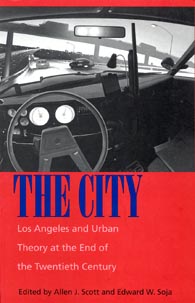 | Title: The city: Los Angeles and urban theory at the end of the twentieth century Author: Scott, Allen John Published: University of California Press, 1997 Subjects: Urban Studies | Geography | Sociology | California and the West | American Studies Publisher's Description: Los Angeles has grown from a scattered collection of towns and villages to one of the largest megacities in the world. In the process, it has inspired controversy among critics and scholars, as well as among its residents. Seeking original perspectives rather than consensus, the editors of The City have assembled a variety of essays examining the built environment and human dynamics of this extraordinary modern city, emphasizing the dramatic changes that have occurred since 1960. Together the essays - by experts in urban planning, architecture, geography, and sociology - create a new kind of urban analysis, one that is open to diversity but strongly committed to collective theoretical and practical understanding. [brief] Similar Items |
| 2. | 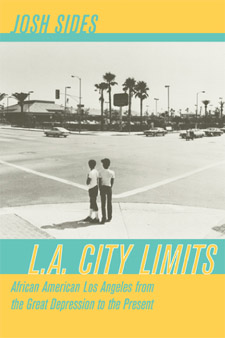 | Title: L.A. city limits: African American Los Angeles from the Great Depression to the present Author: Sides, Josh 1972- Published: University of California Press, 2004 Subjects: History | African American Studies | Urban Studies | Californian and Western History | California and the West Publisher's Description: In 1964 an Urban League survey ranked Los Angeles as the most desirable city for African Americans to live in. In 1965 the city burst into flames during one of the worst race riots in the nation's history. How the city came to such a pass - embodying both the best and worst of what urban America offered black migrants from the South - is the story told for the first time in this history of modern black Los Angeles. A clear-eyed and compelling look at black struggles for equality in L.A.'s neighborhoods, schools, and workplaces from the Great Depression to our day, L.A. City Limits critically refocuses the ongoing debate about the origins of America's racial and urban crisis. Challenging previous analysts' near-exclusive focus on northern "rust-belt" cities devastated by de-industrialization, Josh Sides asserts that the cities to which black southerners migrated profoundly affected how they fared. He shows how L.A.'s diverse racial composition, dispersive geography, and dynamic postwar economy often created opportunities - and limits - quite different from those encountered by blacks in the urban North. [brief] Similar Items |
| 3. | 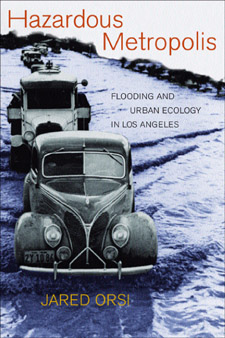 | Title: Hazardous metropolis: flooding and urban ecology in Los Angeles Author: Orsi, Jared 1970- Published: University of California Press, 2004 Subjects: History | California and the West | Urban Studies | Water | Urban Studies Publisher's Description: Although better known for its sunny skies, Los Angeles suffers devastating flooding. This book explores a fascinating and little-known chapter in the city's history - the spectacular failures to control floods that occurred throughout the twentieth century. Despite the city's 114 debris dams, 5 flood control basins, and nearly 500 miles of paved river channels, Southern Californians have discovered that technologically engineered solutions to flooding are just as disaster-prone as natural waterways. Jared Orsi's lively history unravels the strange and often hazardous ways that engineering, politics, and nature have come together in Los Angeles to determine the flow of water. He advances a new paradigm - the urban ecosystem - for understanding the city's complex and unpredictable waterways and other issues that are sure to play a large role in future planning. As he traces the flow of water from sky to sea, Orsi brings together many disparate and intriguing pieces of the story, including local and national politics, the little-known San Gabriel Dam fiasco, the phenomenal growth of Los Angeles, and, finally, the influence of environmentalism. Orsi provocatively widens his vision toward other cities for which Los Angeles may offer a lesson - both of things gone wrong and a glimpse of how they might be improved. [brief] Similar Items |
| 4. | 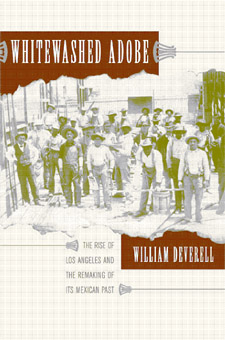 | Title: Whitewashed adobe: the rise of Los Angeles and the remaking of its Mexican past Author: Deverell, William Francis Published: University of California Press, 2004 Subjects: History | Californian and Western History | Chicano Studies | American Studies | Urban Studies Publisher's Description: Chronicling the rise of Los Angeles through shifting ideas of race and ethnicity, William Deverell offers a unique perspective on how the city grew and changed. Whitewashed Adobe considers six different developments in the history of the city - including the cementing of the Los Angeles River, the outbreak of bubonic plague in 1924, and the evolution of America's largest brickyard in the 1920s. In an absorbing narrative supported by a number of previously unpublished period photographs, Deverell shows how a city that was once part of Mexico itself came of age through appropriating - and even obliterating - the region's connections to Mexican places and people. Deverell portrays Los Angeles during the 1850s as a city seething with racial enmity due to the recent war with Mexico. He explains how, within a generation, the city's business interests, looking for a commercially viable way to establish urban identity, borrowed Mexican cultural traditions and put on a carnival called La Fiesta de Los Angeles. He analyzes the subtle ways in which ethnicity came to bear on efforts to corral the unpredictable Los Angeles River and shows how the resident Mexican population was put to work fashioning the modern metropolis. He discusses how Los Angeles responded to the nation's last major outbreak of bubonic plague and concludes by considering the Mission Play, a famed drama tied to regional assumptions about history, progress, and ethnicity. Taking all of these elements into consideration, Whitewashed Adobe uncovers an urban identity - and the power structure that fostered it - with far-reaching implications for contemporary Los Angeles. [brief] Similar Items |
| 5. | 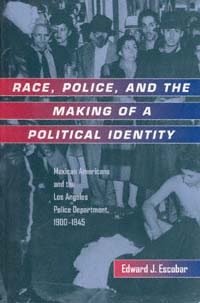 | Title: Race, police, and the making of a political identity: Mexican Americans and the Los Angeles Police Department, 1900-1945 Author: Escobar, Edward J 1946- Published: University of California Press, 1999 Subjects: History | California and the West | Latin American History | Latino Studies | Social Problems | Politics | Californian and Western History | Urban Studies | Criminology | Criminology Publisher's Description: In June 1943, the city of Los Angeles was wrenched apart by the worst rioting it had seen to that point in the twentieth century. Incited by sensational newspaper stories and the growing public hysteria over allegations of widespread Mexican American juvenile crime, scores of American servicemen, joined by civilians and even police officers, roamed the streets of the city in search of young Mexican American men and boys wearing a distinctive style of dress called a Zoot Suit. Once found, the Zoot Suiters were stripped of their clothes, beaten, and left in the street. Over 600 Mexican American youths were arrested. The riots threw a harsh light upon the deteriorating relationship between the Los Angeles Mexican American community and the Los Angeles Police Department in the 1940s.In this study, Edward J. Escobar examines the history of the relationship between the Los Angeles Police Department and the Mexican American community from the turn of the century to the era of the Zoot Suit Riots. Escobar shows the changes in the way police viewed Mexican Americans, increasingly characterizing them as a criminal element, and the corresponding assumption on the part of Mexican Americans that the police were a threat to their community. The broader implications of this relationship are, as Escobar demonstrates, the significance of the role of the police in suppressing labor unrest, the growing connection between ideas about race and criminality, changing public perceptions about Mexican Americans, and the rise of Mexican American political activism. [brief] Similar Items |
| 6. | 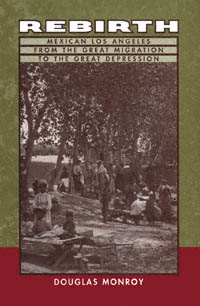 | Title: Rebirth: Mexican Los Angeles from the great migration to the Great Depression Author: Monroy, Douglas Published: University of California Press, 1999 Subjects: History | Latino Studies | United States History | California and the West Publisher's Description: This sweeping, vibrant narrative chronicles the history of the Mexican community in Los Angeles. Douglas Monroy unravels the dramatic, complex story of Mexican immigration to Los Angeles during the early decades of the twentieth century and shows how Mexican immigrants re-created their lives and their communities. Against the backdrop of this newly created cityscape, Rebirth explores pivotal aspects of Mexican Los Angeles during this time - its history, political economy, popular culture - and depicts the creation of a time and place unique in Californian and American history.Mexican boxers, movie stars, politicians, workers, parents, and children, American popular culture and schools, and historical fervor on both sides of the border all come alive in this literary, jargon-free chronicle. In addition to the colorful unfolding of the social and cultural life of Mexican Los Angeles, Monroy tells a story of first-generation immigrants that provides important points of comparison for understanding other immigrant groups in the United States.Monroy shows how the transmigration of space, culture, and reality from Mexico to Los Angeles became neither wholly American nor Mexican, but México de afuera , "Mexico outside," a place where new concerns and new lives emerged from what was both old and familiar. This extremely accessible work uncovers the human stories of a dynamic immigrant population and shows the emergence of a truly transnational history and culture. Rebirth provides an integral piece of Chicano history, as well as an important element of California urban history, with the rich, synthetic portrait it gives of Mexican Los Angeles. [brief] Similar Items |
| 7. | 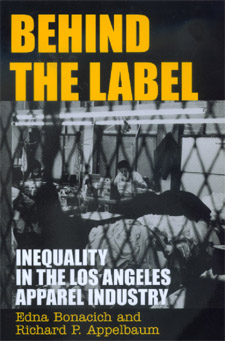 | Title: Behind the label: inequality in the Los Angeles apparel industry Author: Bonacich, Edna Published: University of California Press, 2000 Subjects: Sociology | Social Problems | California and the West | Labor Studies | Economics and Business | Urban Studies | American Studies | Ethnic Studies Publisher's Description: In a study crucial to our understanding of American social inequality, Edna Bonacich and Richard Appelbaum investigate the return of sweatshops to the apparel industry, especially in Los Angeles. The "new" sweatshops, they say, need to be understood in terms of the decline in the American welfare state and its strong unions and the rise in global and flexible production. Apparel manufacturers now have the incentive to move production to wherever low-wage labor can be found, while maintaining arm's-length contractual relations that protect them from responsibility. The flight of the industry has led to a huge rise in apparel imports to the United States and to a decline in employment. Los Angeles, however, remains a puzzling exception in that its industry employment has continued to grow, to the point where L.A. is the largest center of apparel production in the nation. Not only the availability of low-wage immigrant (often undocumented) workers but also the focus on moderately priced, fashion-sensitive women's wear makes this possible. Behind the Label examines the players in the L.A. apparel industry, including manufacturers, retailers, contractors, and workers, evaluating the maldistribution of wealth and power. The authors explore government and union efforts to eradicate sweatshops while limiting the flight to Mexico and elsewhere, and they conclude with a description of the growing antisweatshop movement. Los Angeles Times Best Nonfiction Book of 2000 [brief] Similar Items |
| 8. | 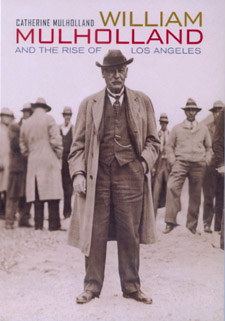 | Title: William Mulholland and the rise of Los Angeles Author: Mulholland, Catherine 1923- Published: University of California Press, 2000 Subjects: History | California and the West | Californian and Western History | Autobiographies and Biographies Publisher's Description: William Mulholland presided over the creation of a water system that forever changed the course of southern California's history. Mulholland, a self-taught engineer, was the chief architect of the Owens Valley Aqueduct - a project ranking in magnitude and daring with the Panama Canal - that brought water to semi-arid Los Angeles from the lush Owens Valley. The story of Los Angeles's quest for water is both famous and notorious: it has been the subject of the classic yet historically distorted movie Chinatown, as well as many other accounts. This first full-length biography of Mulholland challenges many of the prevailing versions of his life story and sheds new light on the history of Los Angeles and its relationship with its most prized resource: water. Catherine Mulholland, the engineer's granddaughter, provides insights into this story that family familiarity affords, and adds to our historical understanding with extensive primary research in sources such as Mulholland's recently uncovered office files, newspapers, and Department of Water and Power archives. She scrutinizes Mulholland's life - from his childhood in Ireland to his triumphant completion of the Owens Valley Aqueduct to the tragedy that ended his career. This vivid portrait of a rich chapter in the history of Los Angeles is enhanced with a generous selection of previously unpublished photographs. Los Angeles Times Best Nonfiction Book of 2000 [brief] Similar Items |
| 9. | 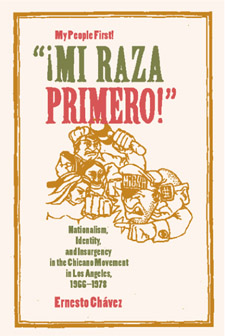 | Title: "Mi raza primero!" (My people first!): nationalism, identity, and insurgency in the Chicano movement in Los Angeles, 1966-1978 Author: Chávez, Ernesto 1962- Published: University of California Press, 2002 Subjects: History | California and the West | Californian and Western History | Chicano Studies | Sociology | Politics | Social Problems | Immigration Publisher's Description: ¡Mi Raza Primero! is the first book to examine the Chicano movement's development in one locale - in this case Los Angeles, home of the largest population of people of Mexican descent outside of Mexico City. Ernesto Chávez focuses on four organizations that constituted the heart of the movement: The Brown Berets, the Chicano Moratorium Committee, La Raza Unida Party, and the Centro de Acción Social Autónomo, commonly known as CASA. Chávez examines and chronicles the ideas and tactics of the insurgency's leaders and their followers who, while differing in their goals and tactics, nonetheless came together as Chicanos and reformers. Deftly combining personal recollection and interviews of movement participants with an array of archival, newspaper, and secondary sources, Chávez provides an absorbing account of the events that constituted the Los Angeles-based Chicano movement. At the same time he offers insights into the emergence and the fate of the movement elsewhere. He presents a critical analysis of the concept of Chicano nationalism, an idea shared by all leaders of the insurgency, and places it within a larger global and comparative framework. Examining such variables as gender, class, age, and power relationships, this book offers a sophisticated consideration of how ethnic nationalism and identity functioned in the United States during the 1960s and 1970s. [brief] Similar Items |
| 10. | 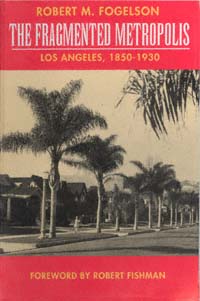 | Title: The fragmented metropolis: Los Angeles, 1850-1930 Author: Fogelson, Robert M Published: University of California Press, 1993 Subjects: Urban Studies | California and the West | Geography | United States History Publisher's Description: Here with a new preface, a new foreword, and an updated bibliography is the definitive history of Los Angeles from its beginnings as an agricultural village of fewer than 2,000 people to its emergence as a metropolis of more than 2 million in 1930 - a city whose distinctive structure, character, and . . . [more] Similar Items |
| 11. | 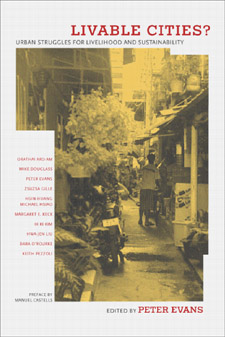 | Title: Livable cities?: urban struggles for livelihood and sustainability Author: Evans, Peter B 1944- Published: University of California Press, 2002 Subjects: American Studies | Environmental Studies | Social Problems | Public Policy | Political Theory | Pacific Rim Studies | Urban Studies | Latin American Studies | Urban Studies | Urban Studies Publisher's Description: The sprawling cities of the developing world are vibrant hubs of economic growth, but they are also increasingly ecologically unsustainable and, for ordinary citizens, increasingly unlivable. Pollution is rising, affordable housing is decreasing, and green space is shrinking. Since three-quarters of those joining the world's population during the next century will live in Third World cities, making these urban areas more livable is one of the key challenges of the twenty-first century. This book explores the linked issues of livelihood and ecological sustainability in major cities of the developing and transitional world. Livable Cities? identifies important strategies for collective solutions by showing how political alliances among local communities, nongovernmental organizations, and public agencies can help ordinary citizens live better lives. [brief] Similar Items |
| 12. | 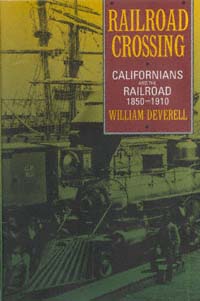 | Title: Railroad crossing: Californians and the railroad, 1850-1910 Author: Deverell, William Francis Published: University of California Press, 1994 Subjects: History | California and the West | United States History | Californian and Western History Publisher's Description: Nothing so changed nineteenth-century America as did the railroad. Growing up together, the iron horse and the young nation developed a fast friendship. Railroad Crossing is the story of what happened to that friendship, particularly in California, and it illuminates the chaos that was industrial America from the middle of the nineteenth century through the first decade of the twentieth.Americans clamored for the progress and prosperity that railroads would surely bring, and no railroad was more crucial for California than the transcontinental line linking East to West. With Gold Rush prosperity fading, Californians looked to the railroad as the state's new savior. But social upheaval and economic disruption came down the tracks along with growth and opportunity.Analyzing the changes wrought by the railroad, William Deverell reveals the contradictory roles that technology and industrial capitalism played in the lives of Americans. That contrast was especially apparent in California, where the gigantic corporate "Octopus" - the Southern Pacific Railroad - held near-monopoly status. The state's largest employer and biggest corporation, the S.P. was a key provider of jobs and transportation - and wielder of tremendous political and financial clout.Deverell's lively study is peopled by a rich and disparate cast: railroad barons, newspaper editors, novelists, union activists, feminists, farmers, and the railroad workers themselves. Together, their lives reflect the many tensions - political, social, and economic - that accompanied the industrial transition of turn-of-the-century America. [brief] Similar Items |
| 13. | 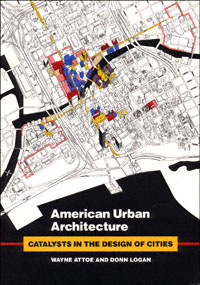 | Title: American urban architecture: catalysts in the design of cities Author: Attoe, Wayne Published: University of California Press, 1992 Subjects: Architecture | Urban Studies Publisher's Description: Conceiving of urban design in terms of architectural actions and reactions, Attoe and Logan propose a theory of "catalytic architecture" better suited to specifically American circumstances than the largely European models developed in the last thirty years for the remaking of cities.After exploring instances of failed attempts to impose European visions on American cities, the authors examine urban design successes that illustrate the principles and goals of catalytic architecture. With a series of case studies they characterize urban design as a controlled evolution, one that must also be strategic, responding to existing elements and guiding those that follow. The authors argue that the failure of American cities to control and guide the energies released in urban development can be prevented by "design guidance". From their own combined experience as urban architects and scholars, they provide a taxonomy of methods to guide urban design toward higher standards and better results. [brief] Similar Items |
| 14. | 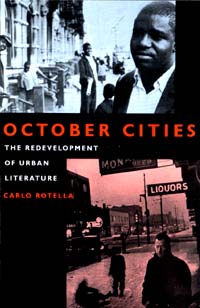 | Title: October cities: the redevelopment of urban literature Author: Rotella, Carlo 1964- Published: University of California Press, 1998 Subjects: Literature | American Studies | Urban Studies | United States History | American Literature | Sociology Publisher's Description: Returning to his native Chicago after World War II, Nelson Algren found a city transformed. The flourishing industry, culture, and literature that had placed prewar Chicago at center stage in American life were entering a time of crisis. The middle class and economic opportunity were leaving the inner city, and Black Southerners arriving in Chicago found themselves increasingly estranged from the nation's economic and cultural resources. For Algren, Chicago was becoming "an October sort of city even in the spring," and as Carlo Rotella demonstrates, this metaphorical landscape of fall led Algren and others to forge a literary form that traced the American city's transformation. Narratives of decline, like the complementary narratives of black migration and inner-city life written by Claude Brown and Gwendolyn Brooks, became building blocks of the postindustrial urban literature. October Cities examines these narratives as they played out in Chicago, Philadelphia, and Manhattan. Through the work of Algren, Brown, Brooks, and other urban writers, Rotella explores the relationship of this new literature to the cities it draws upon for inspiration. The stories told are of neighborhoods and families molded by dramatic urban transformation on a grand scale with vast movements of capital and people, racial succession, and an intensely changing urban landscape. [brief] Similar Items |
| 15. | 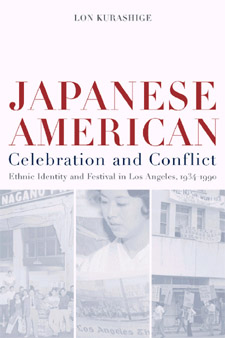 | Title: Japanese American celebration and conflict: a history of ethnic identity and festival, 1934-1990 Author: Kurashige, Lon 1964- Published: University of California Press, 2002 Subjects: History | American Studies | Asian American Studies | Californian and Western History | Immigration Publisher's Description: Do racial minorities in the United States assimilate to American values and institutions, or do they retain ethnic ties and cultures? In exploring the Japanese American experience, Lon Kurashige recasts this tangled debate by examining what assimilation and ethnic retention have meant to a particular community over a long period of time. This is an inner history, in which the group identity of one of America's most noteworthy racial minorities takes shape. From the 1930s, when Japanese immigrants controlled sizable ethnic enclaves, to the tragic wartime internment and postwar decades punctuated by dramatic class mobility, racial protest, and the influx of economic investment from Japan, the story is fraught with conflict. The narrative centers on Nisei Week in Los Angeles, the largest annual Japanese celebration in the United States. The celebration is a critical site of political conflict, and the ways it has changed over the years reflect the ongoing competition over what it has meant to be Japanese American. Kurashige reveals, subtly and with attention to gender issues, the tensions that emerged at different moments, not only between those who emphasized Japanese ethnicity and those who stressed American orientation, but also between generations and classes in this complex community. [brief] Similar Items |
| 16. | 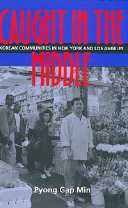 | Title: Caught in the middle: Korean merchants in America's multiethnic cities Author: Min, Pyong Gap 1942- Published: University of California Press, 1996 Subjects: Sociology | Ethnic Studies | Urban Studies | American Studies | California and the West | Social Problems Publisher's Description: In this unflinching exploration of one of the most politically charged topics of our time, Pyong Gap Min investigates the racial dynamics that exist between Korean merchants, the African American community, and white society in general. Focusing on hostility toward Korean merchants in New York and Los Angeles, Min explains how the "middleman" economic role Koreans often occupy - between low-income, minority customers on the one hand and large corporate suppliers on the other - leads to conflicts with other groups. Further, Min shows how ethnic conflicts strengthen ties within Korean communities as Koreans organize to protect themselves and their businesses.Min scrutinizes the targeting of Korean businesses during the 1992 Los Angeles riots and the 1990 African American boycotts of Korean stores in Brooklyn. He explores Korean merchants' relationships with each other as well as with Latin American employees, Jewish suppliers and landlords, and government agencies. In each case, his nuanced analysis reveals how Korean communities respond to general scapegoating through collective action, political mobilization, and other strategies.Fluent in Korean, Min draws from previously unutilized sources, including Korean American newspapers and in-depth interviews with immigrants. His findings belie the media's sensationalistic coverage of African American-Korean conflicts. Instead, Caught in the Middle yields a sophisticated and clear-sighted understanding of the lives and challenges of immigrant merchants in America. [brief] Similar Items |
| 17. | 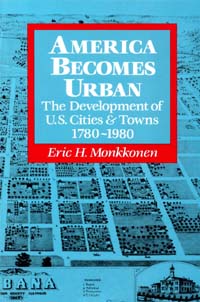 | Title: America becomes urban: the development of U.S. cities & towns, 1780-1980 Author: Monkkonen, Eric H 1942- Published: University of California Press, 1988 Subjects: History | United States History | Urban Studies Publisher's Description: America's cities: celebrated by poets, courted by politicians, castigated by social reformers. In their numbers and complexity they challenge comprehension. Why is urban America the way it is? Eric Monkkonen offers a fresh approach to the myths and the history of US urban development, giving us an unexpected and welcome sense of our urban origins. His historically anchored vision of our cities places topics of finance, housing, social mobility, transportation, crime, planning, and growth into a perspective which explains the present in terms of the past and ofers a point from which to plan for the future. [brief] Similar Items |
| 18. | 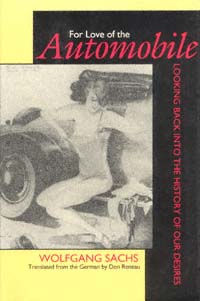 | Title: For love of the automobile: looking back into the history of our desires Author: Sachs, Wolfgang Published: University of California Press, 1992 Subjects: Science | European History | Technology and Society | German Studies Publisher's Description: In his cultural analysis of the motor car in Germany, Wolfgang Sachs starts from the assumption that the automobile is more than a means of transportation and that its history cannot be understood merely as a triumphant march of technological innovation. Instead, Sachs examines the history of the automobile from the late 1880s until today for evidence on the nature of dreams and desires embedded in modern culture. Written in a lively style and illustrated by a wealth of cartoons, advertisements, newspaper stories, and propaganda, this book explores the nature of Germany's love affair with the automobile. A "history of our desires" for speed, wealth, violence, glamour, progress, and power - as refracted through images of the automobile - it is at once fascinating and provocative.Sachs recounts the development of the automobile industry and the impact on German society of the marketing and promotion of the motor car. As cars became more affordable and more common after World War II, advertisers fanned the competition for status, refining their techniques as ownership became ever more widespread.Sachs concludes by demonstrating that the triumphal procession of private motorization has in fact become an intrusion. The grand dreams once attached to the automobile have aged. Sachs appeals for the cultivation of new dreams born of the futility of the old ones, dreams of "a society liberated from progress," in which location, distance, and speed are reconceived in more appropriately humane dimensions. [brief] Similar Items |
| 19. | 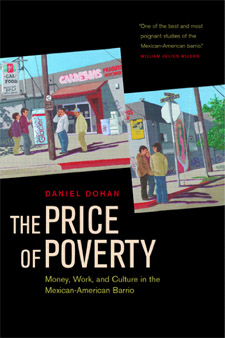 | Title: The price of poverty: money, work, and culture in the Mexican-American barrio Author: Dohan, Daniel 1965- Published: University of California Press, 2003 Subjects: Anthropology | Sociology | Social Problems | Urban Studies | Latin American Studies | Chicano Studies | Labor Studies Publisher's Description: Drawing on two years of ethnographic fieldwork in two impoverished California communities - one made up of recent immigrants from Mexico, the other of U.S.-born Chicano citizens - this book provides an invaluable comparative perspective on Latino poverty in contemporary America. In northern California's high-tech Silicon Valley, author Daniel Dohan shows how recent immigrants get by on low-wage babysitting and dish-cleaning jobs. In the housing projects of Los Angeles, he documents how families and communities of U.S.-born Mexican Americans manage the social and economic dislocations of persistent poverty. Taking readers into worlds where public assistance, street crime, competition for low-wage jobs, and family, pride, and cross-cultural experiences intermingle, The Price of Poverty offers vivid portraits of everyday life in these Mexican American communities while addressing urgent policy questions such as: What accounts for joblessness? How can we make sense of crime in poor communities? Does welfare hurt or help? [brief] Similar Items |
| 20. | 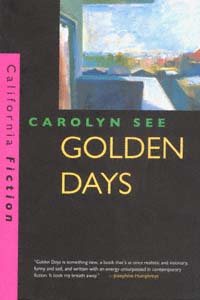 | Title: Golden days Author: See, Carolyn Published: University of California Press, 1996 Subjects: Literature | Fiction | California and the West Publisher's Description: Available again in paperback, Golden Days is a major novel from one of the most provocative voices on the American literary scene. Linking the recent past with an imagined future, Carolyn See captures life in Los Angeles in the 70s and 80s. This marvelously imaginative, hilarious, and original work . . . [more] Similar Items |